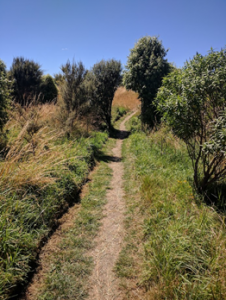
The Māwai Hakona track.
An ideal place to learn and explore
The narrow single-file dirt track off the Hutt River Trail could be easily missed. Likewise the little sign inviting people to become Friends of the Māwai Hakona, but Pinehaven teacher Kate Beaumont-Yee’s delight at this place and its potential to engage students was obvious when she introduced it to Enviroschools Community Facilitator Michelle Ducat.
Research makes it clear that regular connections with nature and place is a foundation of environmental education. Michelle, looking for a place to hold an event for Upper Hutt students that might create the initial spark for ongoing engagement, was excited!
The Māwai Hakona starts from a spring at Trentham Memorial Park, flows through the local golf course and park, and then through St Patrick’s College to Te Awakairangi. There is a restoration area on land St Patrick’s College currently owns.
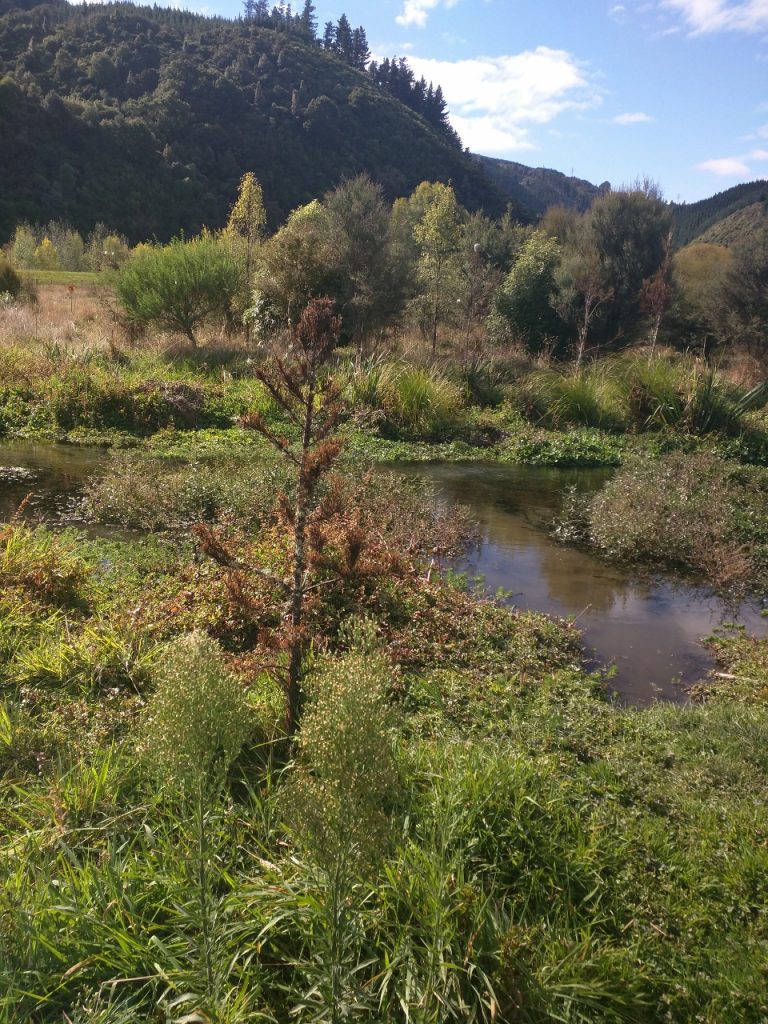
Young kahikatea beside the stream.
Sparking student wonder
Kate and Michelle’s summer walk in January has indeed sparked engagement and wonder, and by June 2021 over 80 students from Pinehaven School and Fergusson Intermediate had visited. Trentham School and Heretaunga Kindergarten have visits planned, and discussions are underway at Silverstream School. Premium Preschool (P2) already enjoy weekly walks along the stream.
“It [is] a happy, calm and exciting place – It makes us want to learn.” – Phoebe Y6 Pinehaven student
All these schools and centres are exploring ways to make this an ongoing part of school and early childhood life.

Barton’s Bush, Trentham; the Silver Stream, 1933 by J.W Chapman Taylor, from Upper Hutt City Library Heritage Collection
Community Connections
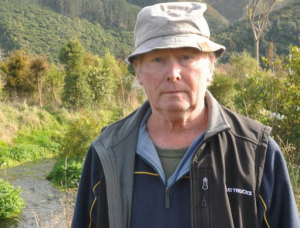
Bart Hogan, co-founder of Friends of the Māwai Hakona
A key to this has been growing relationships with the restoration group Friends of the Māwai Hakona and in particular, their founders Bart Hogan and Graeme Bennett.
The vision is to return this part of the Māwai Hakona stream to the wetland podocarp forest that would have covered much of the valley prior to colonisation.
“It was amazing to see how much you (Graeme and Bart) have done in a short space of time.” – Griff Y6 Pinehaven student
An equally important aspect of this vision is to help make visible aspects of iwi and hapū history connected with this place. This has started with the Friends group commissioning master carvers Sonny Davis, Ihaia Puketapu and Dane Kingi to create a waharoa, pou rāhui and pou mahara.

Rongomatāne carved by Sonny Davis and Ihaia Puketapu
The pou rāhui mark this place as an area to care for, not exploit.
The pou mahara remember the migrations of iwi and hapū from Taranaki and Kawhia, including Ngāti Tama rangatira Te Kaeaea whose kāinga was nearby, and the migrations of people from the south, including those who came to build what was to become Upper Hutt.
These two goals – and the work of over a decade – resonates strongly with teachers in Te Awakairangi ki Uta/Upper Hutt. They are keen to make the connections with history to understand their place better and give their students the opportunity to develop their own sense of connection and commitment to support kaitiakitanga.
Some attended PD earlier in the year led by Claire Mepham from Whirinaki Expressions supported by the work of previous Kaitakawaenga Māori Matiu Jennings.
But there is an understanding too that this is a work in progress, about developing ongoing respectful relationships with the iwi and hapū to ensure stories are shared in an appropriate way.
“It was cool to get to meet the people who started the whole entire forest and set up all the pou.” – Cathal Y5 Pinehaven student

Fergusson Intermediate students beside the pou rahui.
Ākonga action at Mawai Hakona
In Term 1, Kate Beaumont-Yee from Pinehaven School brought her Envirogroup down to explore, starting at the waharoa with a karakia. It was a magical day.
The Year 3 to 6 students walked the loop track and then chose what areas to spend more time in. They cleared a section of the stream of rubbish and sat and painted pictures of the view across the valley, noticing the kārearea, the New Zealand falcon, as it swooped past! Students were delighted to find tuna/eels and even an upland bully. They wondered at the little critters who lived in the fresh water, and valued the time and space to really notice that creating art gave them.
Later in the term, Fergusson Intermediate’s Envirogroup visited this special place. Again the students were excited by the tuna/eels and freshwater life and this time Greater Wellington Regional Council (GWRC) Biosecurity Officer Lawrence Davenhill and Friends volunteer Barbara Hay provided additional support. Invasive freshwater weeds are one of the challenges for the restoration – and the Fergusson Intermediate students were keen to get stuck in, removing pond weed and monkey musk.
Toby Funnell, lead teacher for Enviroschools at Fergusson Intermediate, could immediately see the potential.
“There are so many opportunities for learning and for our students to get stuck in – from observing and learning about natural systems to taking action to protect them.” – Toby Funnell
Enviroschools have supported the process through research, sharing resources, liaising with teachers, experts and volunteers, and running activities on the day.
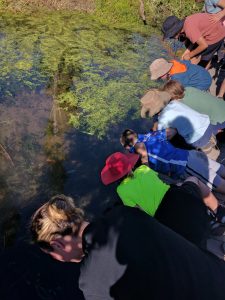
Watching the tuna/ eels.
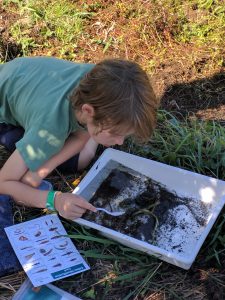
Looking closely for macro invertebrates in the sample taken.
“We had a great time on the bridge . There were eels there and we got some plastic out.” – Samuel, Y5 Pinehaven student
Kate’s enthusiasm has ensured the word has spread. Trentham School teacher, Carol Elers-Nuku, invited the teachers and students from Pinehaven and Fergusson Intermediate to share their Māwai Hakona experiences with students in her syndicate. After a warm whakatau to welcome them all, the students and teachers shared a presentation. Trentham students asked great questions and honoured us all with a waiata, that had been composed by Carol’s friend Tipene Chrisp, to mihi to the Māwai Hakona as it flows into Te Awakairangi. The waiata also acknowledges the rangatira Te Kaeaea and the marae Orongomai. The establishment of Orongomai was strongly supported by the famous Māwai Hakona Kapa Haka group in the 1960s and 70s.
“It was amazing to see how many native plants and insects there are – including the Upland Bully.” – Jimmy Y5 Pinehaven student
Enviroschools continues to work with all these schools to explore what an ongoing commitment to this place could look like.
“Māwai Hakona can potentially become an outdoor classroom space for many of our local schools; a place to learn about the ecology and history of this area and a place to begin to support kaitiakitanga, and be guardians of nature.” Kate Beaumont-Yee
For the Friends of Māwai Hakona, the involvement of tamariki and young people is vital. They will be the generation to carry this work on.
“Our wholeness (health) and our very survival depend on bonding with Papatūānuku (earth mother) and learning all that she offers us. Please let our children play with her, learn with her, love with her and listen to her.” – Penny Brownlee, Papatūānuku, The Original Playcentre, illustrated in Playcentre Volume 72, 1988

Pinehaven artwork inspired by Māwai Hakona.
“It is very beautiful now and it will grow to be more beautiful as the generations continue.” – Ben, Y6 Pinehaven student
